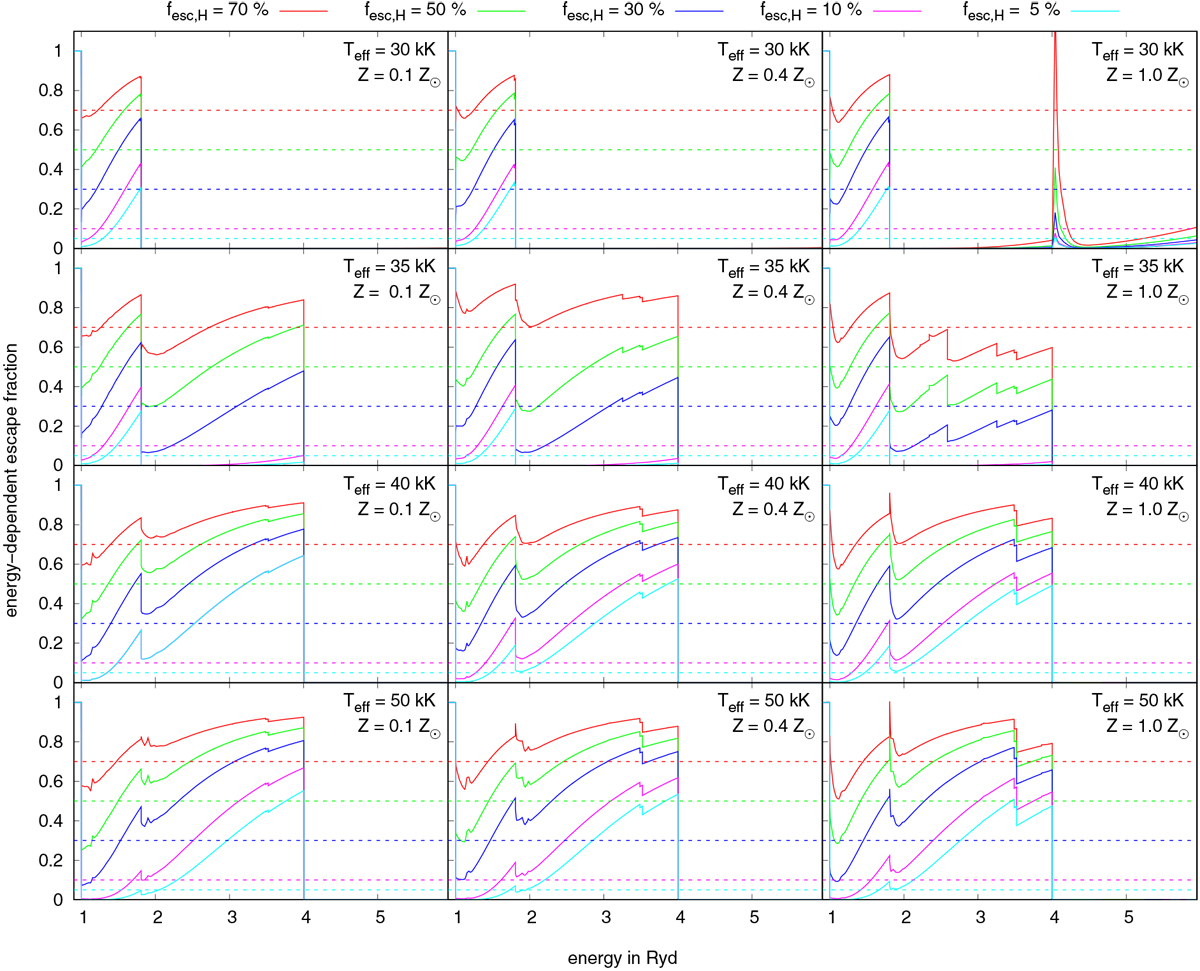Fig. 2

Energy-dependent escape fractions F(ν)∕F⋆(ν) of photons above the ionization threshold of hydrogen for the fluxes shown in Fig. 1. In general, the escape fraction rises above each of the strong ionization edges due to the decreasing absorption cross sections for higher photon energies. The He II-ionizing photons are almost completely absorbed within the H II regions for all considered stellar sources; for Teff = 30 000 K almost no He I-ionizing radiation can escape from the H II region either. For higher metallicities, in addition to the prominent ionization edges of H I, He I, and He II, there is also notable absorption by metal ions, especially of O II, Ne II, N III, and C III with ionization energies of 2.59, 3.35, 3.49, and 3.52 Ryd, respectively. The dashed lines indicate the corresponding angle-averaged escape fractions for the case of extremely clumpy H II regions that would allow radiation to escape unhindered in some directions while being completely opaque to all wavelengths in others (“picket-fence” case). The spike in the escape fractions of the upper right panel is a result of the extremely low stellar He II-ionizing photon flux, which is approximately 12 orders of magnitude lower than the corresponding hydrogen-ionizing flux. Thus, even very little emission of photons by the H II region in that energy range is sufficient to exceed the flux emitted by the stellar atmosphere.
Current usage metrics show cumulative count of Article Views (full-text article views including HTML views, PDF and ePub downloads, according to the available data) and Abstracts Views on Vision4Press platform.
Data correspond to usage on the plateform after 2015. The current usage metrics is available 48-96 hours after online publication and is updated daily on week days.
Initial download of the metrics may take a while.


